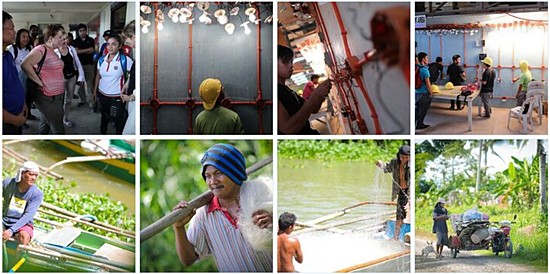|

Save
the Children has reached nearly 900,000 people in its
comprehensive response. The children’s agency has vowed to
continue its rehabilitation assistance to some of the worst-hit
children and families. |
Two years after
Yolanda, Save the Children says ‘job is not yet over’
By Save the Children
November 6, 2015
Humanitarian agency vows continued rehabilitation support to children
and their families.
MAKATI CITY – Two years
after super typhoon Yolanda, Save the Children says ‘job is not yet
over’ and vows to continue its rehabilitation assistance to some of
the worst-affected children and families who are still reeling from
heavy loss of property and livelihoods. The super typhoon, which
struck on November 8, 2013, affected more than 14 million people,
including at least 5 million children, and left nearly 8,000 dead or
missing.
Save the Children Director, Ned Olney, said: “Clearly, the job is not
yet over. We knew from the start that this was going to be a long
process of rehabilitation. The world has not seen this kind of damage
from any typhoon in recent history. No media coverage can fully
describe what happened that harrowing day.”
Olney added: “Although tremendous effort has been put in to help
survivors, continued support is critical at this stage to ensure
Yolanda won’t leave a devastating legacy for thousands of families and
their children. Our worry is that families may no longer be able to
send their children to school and provide for their families once the
assistance stops. Improving livelihoods is essential for long term
recovery.”
Two years into the response, Save the Children has reached nearly
900,000 people, including half a million children in partnership with
communities, civil society, donors and the government. The children’s
agency has distributed families food and water; provided medicines and
primary health services through our mobile health clinics; repaired
classrooms, health facilities and water systems; and provided shelter
and livelihood assistance to farmers, fishermen and out-of-school
youth to help them provide for their families.
Felipe Malinao, 35, received assistance from Save the Children’s
livelihood program in Kananga, Leyte after the typhoon damaged his
crops and killed his livestock. Felipe used the livelihoods cash grant
to buy a carabao and three goats which he can use for farming and
selling. Felipe said: “I can use my carabao to plow and cultivate a
bigger area to plant my crops. When the time is ripe, I can barter the
male carabao I bought with a female so it could produce offspring that
I could share to my children.” Felipe shares that he hopes to use his
income to buy food and send his kids to school.
The children’s agency has provided skills training for out-of-school
youth so that they could find job or start up their own business.
Geovelyn, 21, enrolled in Save the Children funded welding program in
Tacloban after she quit school when her mother, 3 sisters and
relatives died during Yolanda. Jovelyn said: “I had to quit school to
be close to my family. I felt so guilty that I wasn’t able to do
anything for them since I was in another town that time.” After
finishing the program, Geovelyn got a job as staff at the same
training facility.
Moreover, Save the Children says that rehabilitation should not stop
at building homes and restoring livelihoods. To ensure welfare of
children in times of disaster, Save the Children is renewing the call
for the Congress and Senate to immediately pass the “Children’s
Emergency Relief and Protection Act” which calls for a comprehensive
plan to protect children’s rights before, during and after a disaster.
Olney said: “Children are always the most vulnerable when disasters
strike. If there is anything ‘Yolanda’ taught us all, it is that
improving protection for children before during and after emergencies
is essential to saving lives. Passing the child protection in
emergencies bill ensures that we learn from our experience to mitigate
the impact of future emergencies on children.”